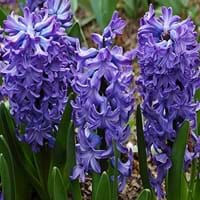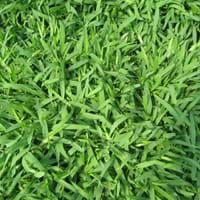Life Span
Perennial
Perennial
Type
Bulb or Corm or Tuber
Grass
Origin
Mediterranean, Western Asia
Southeastern United States, California, Caribbean
Types
Not Available
Not Available
Habitat
Mediterranean region
marshes, Swamps, Tropical Climate
USDA Hardiness Zone
4-9
8-11
Sunset Zone
21,22
H1, H2, 12, 13, 18, 19, 20, 21, 22, 23, 24
Habit
Clump-Forming
Mat-forming
Minimum Width
Not Available
Flower Color
White, Yellow, Red, Blue, Purple, Pink, Lavender, Violet
Not Available
Flower Color Modifier
Bicolor
Bicolor
Fruit Color
Not Available
Non Fruiting Plant
Leaf Color in Spring
Green
Green
Leaf Color in Summer
Light Green
Light Green
Leaf Color in Fall
Several shades of Green
Green
Leaf Color in Winter
Light Green
Green
Leaf Shape
Long slender
Fin-shaped Tufts
Plant Season
Spring, Winter
Spring, Summer, Fall, Winter
Sunlight
Full Sun, Partial Sun
Full Sun, Partial Sun
Type of Soil
Loam
Loam, Sand
The pH of Soil
Acidic, Neutral
Acidic, Neutral, Alkaline
Soil Drainage
Well drained
Well drained
Bloom Time
Early Spring, Spring, Late Winter, Indeterminate
Indeterminate
Tolerances
Black Walnut Toxicity, Rabbit, Shade areas
Pollution, Salt, Soil Compaction
Where to Plant?
Container, Ground, Pot
Ground
How to Plant?
chipping, Offsets, scooping, Twin scaling, Vegetative
Plugs, Sod, Sprigs
Plant Maintenance
Low
Medium
Watering Requirements
Medium
Average Water Needs
In Summer
Lots of watering
Lots of watering
In Spring
Moderate
Moderate
In Winter
Average Water
Average Water
Soil pH
Acidic, Neutral
Acidic, Neutral, Alkaline
Soil Type
Loam
Loam, Sand
Soil Drainage Capacity
Well drained
Well drained
Sun Exposure
Full Sun, Partial Sun
Full Sun, Partial Sun
Pruning
Remove damaged leaves, Remove dead branches, Remove dead leaves
Remove damaged leaves, Remove dead branches, Remove dead leaves
Fertilizers
All-Purpose Liquid Fertilizer, General garden fertilizer, Time release fertilizer
All-Purpose Liquid Fertilizer
Pests and Diseases
Pests and diseases free
Red blotch
Plant Tolerance
Black Walnut Toxicity, Rabbit, Shade areas
Drought
Flowers
Showy
Insignificant
Flower Petal Number
Single, Double, Semi-Double
Single
Foliage Texture
Medium
Medium
Foliage Sheen
Glossy
Glossy
Attracts
Insects
Not Available
Allergy
Asthma
Congestion, Itchiness, sneezing
Aesthetic Uses
Beautification, Bouquets, Cottage Garden, Landscape Designing, Showy Purposes
Beautification
Beauty Benefits
Not Available
Not Available
Environmental Uses
Not Available
Air purification
Medicinal Uses
Not Available
Not Available
Part of Plant Used
Flowers
Not Available
Other Uses
Decoration Purposes, Showy Purposes
Used in lawns and turf
Used As Indoor Plant
Yes
No
Used As Outdoor Plant
Yes
Yes
Garden Design
Bedding Plant, Container, Cutflower, Mixed Border, Rock Garden / Wall
Lawns and Turf
Botanical Name
Hyacinthus orientalis
STENOTAPHRUM secundatum
Common Name
Hyacinth, common hyacinth, garden hyacinth, dutch hyacinth
Softleaf Buffalo Grass, St. Augustine Grass
In Hindi
ह्यचीन्थ
St. Augustine Grass
In German
Hyazinthe
St. Augustine Grass
In French
jacinthe
St. Augustine Grass
In Spanish
jacinto
St. Augustine Grass
In Greek
υάκινθος
St. Augustine Grass
In Portuguese
jacinto
St. Augustine Grass
In Polish
hiacynt
St. Augustine Grass
In Latin
et hyacinthinas,
St. Augustine Grass
Phylum
Magnoliophyta
Magnoliophyta
Class
Liliopsida
Liliopsida
Genus
Hyacinthus
Stenotaphrum
Clade
Angiosperms, Monocots
Angiosperms, Commelinids, Monocots
Tribe
Not Available
Paniceae
Subfamily
Scilloideae
Panicoideae
Importance of Hyacinth and St. Augustine Grass
Want to have the most appropriate plant for your garden? You might want to know the importance of Hyacinth and St. Augustine Grass. Basically, these two plants vary in many aspects. Compare Hyacinth and St. Augustine Grass as they differ in many characteristics such as their life, care, benefits, facts, etc. Every gardener must at least have the slightest clue about the plants he wants to plant in his garden. Compare their benefits, which differ in many ways like facts and uses. The medicinal use of Hyacinth is Not Available whereas of St. Augustine Grass is Not Available. Hyacinth has beauty benefits as follows: Not Available while St. Augustine Grass has beauty benefits as follows: Not Available.
Compare Facts of Hyacinth vs St. Augustine Grass
How to choose the best garden plant for your garden depending upon its facts? Here garden plant comparison will help you to solve this query. Compare the facts of Hyacinth vs St. Augustine Grass and know which one to choose. As garden plants have benefits and other uses, allergy is also a major drawback of plants for some people. Allergic reactions of Hyacinth are Asthma whereas of St. Augustine Grass have Congestion, Itchiness and sneezing respectively. Having a fruit bearing plant in your garden can be a plus point of your garden. Hyacinth has no showy fruits and St. Augustine Grass has no showy fruits. Also Hyacinth is not flowering and St. Augustine Grass is not flowering . You can compare Hyacinth and St. Augustine Grass facts and facts of other plants too.





